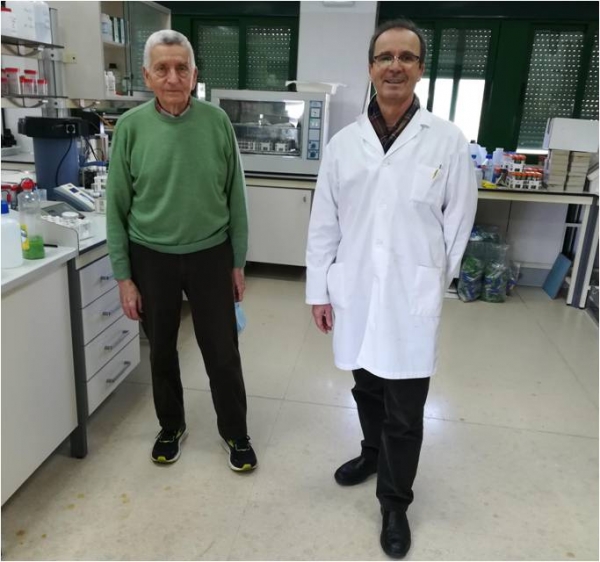Iron oxides are minerals that control key geochemical and agronomic aspects in soils. The color of a soil varies depending on the kind of iron oxide that prevails in it; soils that contain hematite iron oxide (a-Fe2O3) have reddish hues, whereas those in which goethite (a-FeOOH) is most common are yellow. The coloring indirectly accounts for the soil's drainage. What is more, they influence: susceptibility to soil erosion, stabilization of organic matter (and, as a result, its capacity for carbon sequestration), magnetism via the magnetic oxides magnetite (Fe3O4) and maghemite (g-Fe2O3), which are used in paleoclimatic studies, as well as nitrogen fixation and phosphorus adsorption, critical nutrients for plants.
Accordingly, finding out more about climatic and geochemical factors that influence in the formation of different iron oxides is an essential line of research in order to better understand soil. The Soil Science Unit at the María de Maeztu Excellence Unit, Agronomy Department at the University of Cordoba (abbreviated to DAUCO in Spanish), has been advancing in this line of research for years. In their latest paper, Professors Vidal Barrón and José Torrent along with the collaboration of scientists at Southwest University in China, have gone one step further: they have proven that the presence of phosphate plays a crucial role in the formation of iron oxides.
Though the concentration of iron oxides was considered to be controlled by the primary source of iron and climate conditions, with this paper by Torrent and Barrón, the need to take into account the presence of phosphorus was substantiated. Therefore, in order to obtain correlations between the presence of different iron oxides and climatic parameters, it is necessary to consider geochemical factors, among which this element is vital.
Previously, the importance of the presence of this phosphate in the formation of iron oxides such as maghemite and hematite was verified in laboratory conditions and now, with this study carried out in very weathered natural soils in southeastern China, the abovementioned previous studies were corroborated.
With this paper, published in Geophysical Research Letters, the available insights into the invisible universe of soil have increased. By means of iron oxides, spread widely throughout soils on Earth and Mars, not only can we understand the processes that occur under our feet and apply them to our understanding of agronomy, but we can also provide information as to what the climates on Earth and our neighboring planet were like in the past.
Reference:
Ren, J., Long, X., Ji, J., Barrón, V., Torrent, J., Wang, Y. and Xie, S. (2020), Different Enrichment Patterns of Magnetic Particles Modulated by Primary Iron‐Phosphorous Input. Geophys. Res. Lett., 47: e2020GL090439. https://doi.org/10.1029/2020GL090439


